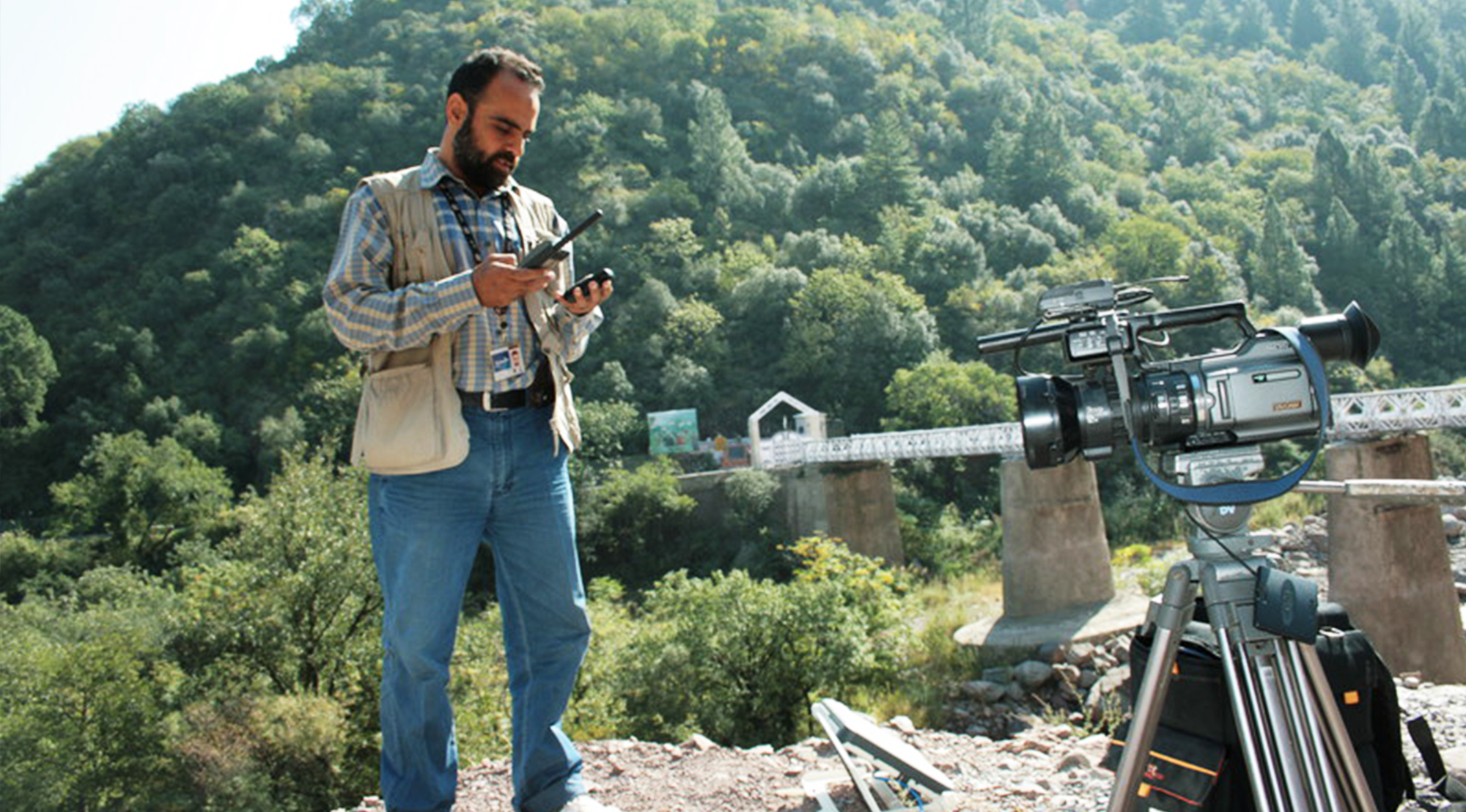Conciliation Resources, alongside their partners, supported the production of a short film, which shows how disaster management can be a tool for cooperation between divided people.
Over the past 40 years, South Asia has experienced more than 1,300 natural disasters – these have been particularly severe in the Himalayan region of Jammu and Kashmir. An earthquake in 2005 left four million homeless, and floods in September 2014 were some of the worst to hit the region in over 100 years.
Jammu and Kashmir has been a hub of violent conflict since 1947, divided by a highly militarised Line of Control (LoC). Despite not being able to meet in the region, a team of four filmmakers from both sides of the LoC, supported by Conciliation Resources, have produced the film “Disaster: The common enemy” to raise awareness of the importance of working across the divide to improve disaster management.
As well as making disaster management more effective, and therefore potentially saving thousands of lives, a shared response could help build confidence between different groups and support long-term peacebuilding efforts in the region. Atia Anwer Zoon, a peace and conflict resolution expert from the Pakistan-administered side of Kashmir, appears in the film and explains:
“Disasters know no geographical boundaries, and therefore create a special opportunity for collaboration in conflict sensitive regions.”
Conciliation Resources has begun exploring this area of work alongside Kashmiri partners, including Shafat Ahmed – a Kashmiri from the Indian side of Kashmir. He has produced a briefing paper which presents practical ideas to improve disaster preparedness and response in the region, and also consulted on this film:
“A more effective response to disasters could save lives in this region. It is in the interests of both of sides to share joint research and data to help prepare for, and respond to, disasters. I also think that working collaboratively will build trust and confidence between people on either side of the divide.”
Suggestions for ways to collaborate include sharing hydrological and seismological data to improve early warning and improving lines of communication and access across the LoC during humanitarian crises.


